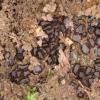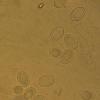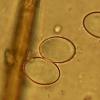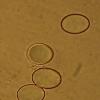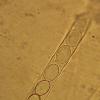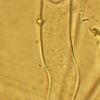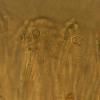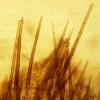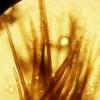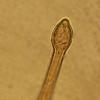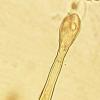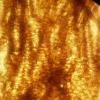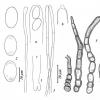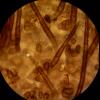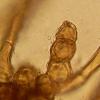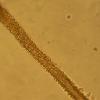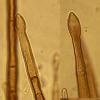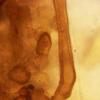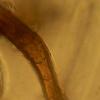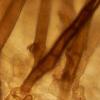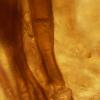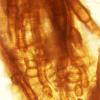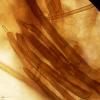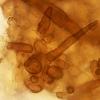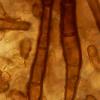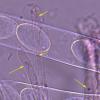
07-12-2025 16:07
Arnold BüschlenHallo, ich habe in einer Moos-Aufsammlung (epiphy

08-12-2025 21:04
Mark Stevens"Hello everyone,I'm relatively new to microscopy (

09-12-2025 12:06
 Andgelo Mombert
Andgelo Mombert
Bonjour,Je recherche l'article concernant Hypobryo

08-12-2025 18:59
 Lothar Krieglsteiner
Lothar Krieglsteiner
.. found by a seminar-participant, I do not know t

08-12-2025 17:37
 Lothar Krieglsteiner
Lothar Krieglsteiner
20.6.25, on branch of Abies infected and thickened

16-03-2014 22:00
Hello,I found this species a few months ago but ha

08-12-2025 13:39
Thomas Læssøehttps://svampe.databasen.org/observations/10572899
Wilcoxina?
Zuzana Sochorová (Egertová),
26-07-2016 18:06
 Hello,
Hello,a group of these fungi grew on soil in sheltered places in a margin of a way, in Kyrgyzstan, Tien Shan mountains, 1970 m asl. Picea schrenkiana grew nearby.
Apothecia 1.5-2.3 mm broad, sessile, shallowly cupulate, hymenium greyish, brown hairs at margin.
Spores without guttules, smooth, hyaline, ellipsoid, 12.5-15 x 8.5-10 micrometers.
Asci cylindrical, octosporic, uniseriate, IKI-, with croziers, 160-190 x 10.5-12 micrometers.
Paraphyses septate, straight or sometimes bent, 2-2.5 micrometers broad in the middle, 3-3.8 micrometers at apex.
Hairs brown, septate, thick-walled (wall up to 3 micrometers broad), sometimes with broadened apex, 120-400 micrometers long, 5-8 micrometers broad in the middle.
Ectal excipulum t. globosa-angularis, with cells 7-22 micrometers broad.
When collecting them, I though it was a species of Trichophaea, but due to the small spores without guttules, Wilcoxina rehmii seems to be the best possibility (although I cannot see the little inclusions at poles and spores are slightly broader).
Zuzana
René Dougoud,
27-07-2016 17:53
Re : Wilcoxina?
Bonjour Suzana,
A toute fin utile, je te remets ma planche de dessins de W. rehmii.
Parmi les caractères générique, il y a le fait que les ascospores se collapsent facilement dans le BCL et présente une réfringence de couleur jaune. Il y aussi la présence de multiples cellules à la base de certains poils. J'avais également relevé, pour W. rehmii, ce caractère inédit pour l'espèce, soit la coloration des noyaux des paraphyses dans le carmin acétique.
J'ai décrit cette espèce en 2002 dans Fungi non delineati pars XVIII, si tu le souhaites, je peux t'adresser le texte.
Amicalement
René
A toute fin utile, je te remets ma planche de dessins de W. rehmii.
Parmi les caractères générique, il y a le fait que les ascospores se collapsent facilement dans le BCL et présente une réfringence de couleur jaune. Il y aussi la présence de multiples cellules à la base de certains poils. J'avais également relevé, pour W. rehmii, ce caractère inédit pour l'espèce, soit la coloration des noyaux des paraphyses dans le carmin acétique.
J'ai décrit cette espèce en 2002 dans Fungi non delineati pars XVIII, si tu le souhaites, je peux t'adresser le texte.
Amicalement
René
Zuzana Sochorová (Egertová),
27-07-2016 19:09
Nicolas VAN VOOREN,
29-07-2016 11:59

Re : Wilcoxina?
Did you also consider the genus Paratrichophaea?
Zuzana Sochorová (Egertová),
29-07-2016 14:26

Re : Wilcoxina?
I did, but I knew only about Paratrichophaea boudieri and excluded it due to its too large spores. Now I can see there exists also P. parvispora with spores 14-16 x 8-10 micrometers. But the paraphyses are described by Benkert as "apikal kaum erwartert". In the last photo in this web I can also see only straight paraphyses without distinctly broadened apex.
http://bender-coprinus.de/pilz_der_woche/2012/_paratrichophaea_parvispora.html
In my fungus some paraphyses were bent.
http://bender-coprinus.de/pilz_der_woche/2012/_paratrichophaea_parvispora.html
In my fungus some paraphyses were bent.
René Dougoud,
29-07-2016 15:17
Re : Wilcoxina?
Outre des ascospores éguttulées, les espèces du genre Paratrichophaea possèdent des poils dont l'origine est profonde (Pfister Mycologia 80(4) 1988: 515-519). Je ne sais si ce caractère a été observé ou non sur la récole, par Zuzana.
Les dernières photos présentée, de poils, de granulations et de l'hyphe d'ancrage correspondent pour Wilcoxina
René
Zuzana Sochorová (Egertová),
29-07-2016 21:09

Re : Wilcoxina?
Bonsoir René,
I´m not with microscope now and didn´t focuse on this character before.
I can only add some more photos of hairs - the strange shape of their apex (it was in minority, most of the hairs had normal apex) and the base.
I don´t recognize in it the ampullaceous base like illustrated in the article "Une espèce et un genre peu connus, Paratrichophaea boudieri (Grelet) Bronckers" or described by Benkert in P. parvispora.
Z.
I´m not with microscope now and didn´t focuse on this character before.
I can only add some more photos of hairs - the strange shape of their apex (it was in minority, most of the hairs had normal apex) and the base.
I don´t recognize in it the ampullaceous base like illustrated in the article "Une espèce et un genre peu connus, Paratrichophaea boudieri (Grelet) Bronckers" or described by Benkert in P. parvispora.
Z.
Nicolas VAN VOOREN,
30-07-2016 13:52

Re : Wilcoxina?
If this species belongs to Wilcoxina, so I do not find any species that corresponds to these characters. W. rehmii has hairs more constricted at septa on the basal cells and spores have polar inclusions, and W. mikolae has hairs of different shape and spores not so wide...
This collection is a good candidate for a DNA extraction ;-)
This collection is a good candidate for a DNA extraction ;-)
Zuzana Sochorová (Egertová),
30-07-2016 21:14

Re : Wilcoxina?
Hm hm, maybe we will try. There are some Wilcoxina species and Paratrichophaea boudieri at GeneBank, so comparison would be possible. I had minitubes with CTAB with me, but used them all for other species, but hopefully using rehydrated apothecia would work too.
If someone wants to microscope it, I can provide part of the collection.
If someone wants to microscope it, I can provide part of the collection.
Zuzana Sochorová (Egertová),
05-11-2016 22:31

Re : Wilcoxina?
Good evening,
just to finish this topic - ITS of our fungus has 99% identity with Wilcoxina rehmii at GenBank (AF266708.1).
Best regards, Zuzana
just to finish this topic - ITS of our fungus has 99% identity with Wilcoxina rehmii at GenBank (AF266708.1).
Best regards, Zuzana
Nicolas VAN VOOREN,
06-11-2016 10:07

Re : Wilcoxina?
Thanks Zuzana for sharing your results. It offers the opportunity to better know the variability of this species.
It could be interesting to examine a rehydrated piece of an apothecium in 5% KOH to see how is the content of some ascospores. Maybe small inclusions will be visible...
It could be interesting to examine a rehydrated piece of an apothecium in 5% KOH to see how is the content of some ascospores. Maybe small inclusions will be visible...
Zuzana Sochorová (Egertová),
06-11-2016 20:14

Re : Wilcoxina?
I tried it now in 3% KOH (don´t have 5%) and didn´t see any inclusions...
If you are interested, I can send a part of the collection to you.
If you are interested, I can send a part of the collection to you.
René Dougoud,
07-11-2016 12:11
Re : Wilcoxina?
Chère Zuzana, Cher Nicolas,
Merci pour ta communication relative à W. rehmii.
J'ai examiné, à partir de ma récolte, de juin 1999, si les granulations polaires apparaissaient encore. Ce n'est pas le cas dans l'eau. Dans le KOH 5%, les ascospores matures ne présentent aucune granulation interne, mais les ascospores immatures sont entièrement remplies de granulations internes. Dans le carmin acétique, on devine de manière très obscure et sur certaines ascospores, des granulations polaires. Les noyaux sont encore colorables dans le carmin acétique, y compris les noyaux contenue dans les très jeunes ascospores. Encore une chose, j'ai aussi vu quelques poils avec un renflement aux extrémités .
Annexe photo de paraphyses avec noyaux coloré par le carmin acétique.
Amitiés
René
Merci pour ta communication relative à W. rehmii.
J'ai examiné, à partir de ma récolte, de juin 1999, si les granulations polaires apparaissaient encore. Ce n'est pas le cas dans l'eau. Dans le KOH 5%, les ascospores matures ne présentent aucune granulation interne, mais les ascospores immatures sont entièrement remplies de granulations internes. Dans le carmin acétique, on devine de manière très obscure et sur certaines ascospores, des granulations polaires. Les noyaux sont encore colorables dans le carmin acétique, y compris les noyaux contenue dans les très jeunes ascospores. Encore une chose, j'ai aussi vu quelques poils avec un renflement aux extrémités .
Annexe photo de paraphyses avec noyaux coloré par le carmin acétique.
Amitiés
René

